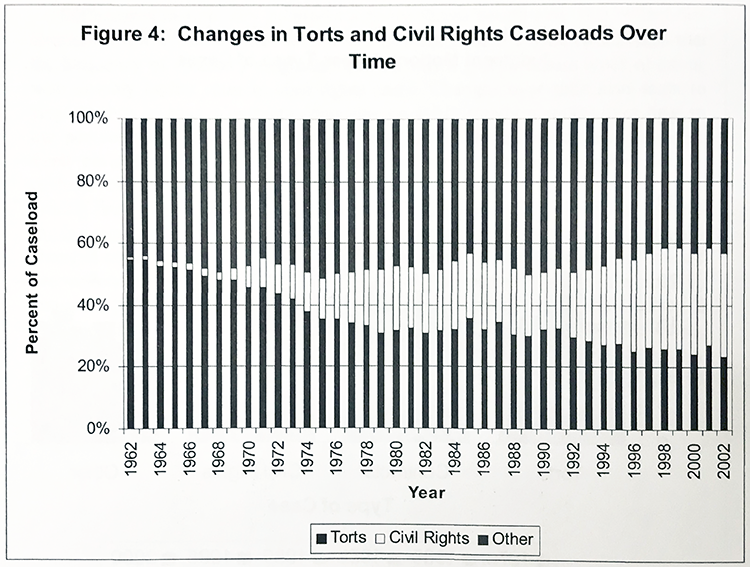You are here
Federal Judicial Center Celebrates 50 Years
Research

From its inception, the Center has functioned within the framework of the judiciary’s administrative and policy-making structure as a source of independent research and analysis for the federal courts. The Center’s independent research, like that of its education mission, has come to be viewed as an integral and important service to the federal judiciary.
Center research has always been viewed as a scarce, but crucial, resource to the judiciary. Research projects undertaken by the Center are designed to help the judiciary solve problems that are sufficiently pervasive and occur with enough frequency to warrant the allocation of research resources. As such, the bulk of the Center’s research responds to Judicial Conference requests for empirical and legal analyses to support of the work of its various committees. A smaller portion of the Center’s research is generated independent of such requests and is undertaken to anticipate needs of the courts that may not be immediately apparent, such as the possible impact of major pending legislation or the introduction of new technologies in the courts. Less frequently, the Center undertakes research in response to a direct request from Congress or in reply to congressional requests directed to the Judicial Conference, which then turns to the Center. Consistent with the Center’s statute, research has sometimes been undertaken to stimulate and encourage others outside of the judiciary to conduct similar research and evaluation.
The Center’s staff of interdisciplinary trained professionals has been key to the success of its research efforts. Throughout the Center's history, its highly dedicated research staff has provided the requisite continuity and research experience to earn respect from all components of the federal judiciary. Most federal judges and court personnel have used or been served by some of the Center’s studies. For some of the Center’s constituents, awareness of the FJC’s research may be limited mostly to the research reports that are published and distributed to the courts. Important as those reports are, they are by no means the whole story of the Center's research activity—such reports often give no evidence of the related services and support that Center researchers provide to the federal judiciary. An example of such a service is the creation and maintenance of the Center’s Integrated Database, which contains data on hundreds of thousands of federal civil, criminal, bankruptcy, and appellate cases going back to the early 1970s.
While FJC research activity has evolved and grown since the Center was created in 1967, the growth and development has been relatively modest compared to changes in the jurisdiction and caseload of the judicial courts during the same period. In the early years, Center researchers designed and conducted studies that were largely descriptive. The objective was to capture as much descriptive information about how the federal courts functioned; how judges viewed their duties; and how they went about the conduct of their official functions as judges. Early Center studies mapped out and described in great detail how a civil or criminal case, for example, moved through the federal courts, from the moment the case was filed to the point at which the litigation concluded.
In the late 1970s, the Center launched the multiyear District Court Studies Project, the goal of which was to empirically identify case-management approaches and procedures that were associated with the most expedient case outcomes and consistent with the highest standards of justice. The research entailed data-gathering visits to a representative sample of federal district courts to collect extensive case data from court dockets and other case records. The project was structured to allow ample observations by Center researchers of the widest possible variety of district court proceedings. In-depth interviews with judges and court personnel were also conducted. The researchers then sought to determine why one case, for example, may have taken two years to reach disposition and yet another similar case in the same court might have taken only months to resolve. From that early line of research emerged important findings that remain to this day part of the bedrock principles of effective case-management techniques to reduce cost and delay in federal litigation.
By the early 1990s, Center research became less descriptive, more data-driven, and more focused on helping busy federal judges to better meet their caseload demands. As a result, Center research focused more on developing and updating manuals, pocket guides, and other resource materials about case management. These manuals were prepared by Center researchers, sometimes in collaboration with staff of the Administrative Office or with other outside collaborators, like the National Academy of Sciences, the American Bar Foundation, and the National Institute for Trial Advocacy. Examples of these publications were the Manual for Managing Bankruptcy Litigation, the Resource Guide for Managing Prisoner Civil Rights Cases, the Civil Litigation Management Manual, and the Reference Manual on Scientific Evidence.

